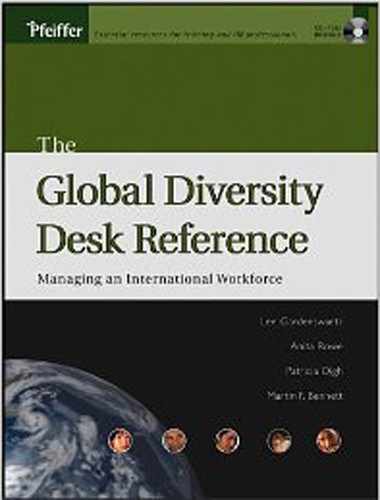6.3. IDENTIFYING INFLUENCES ON PROBLEM SOLVING ACROSS BORDERS
Once problem-solving group members acknowledge and dispel myths and have a realistic sense about the problem-solving process, the next step is to look at the particular realities a group faces as it works to solve problems in organizations that span the globe. Consider each of the following factors and what their influence is on your problem-solving process.
6.3.1. National and Organizational History
Each organization, national culture, and functional unit has its own history. When global participants gather to solve problems together, a part of their interaction may be unconsciously impacted by their own national histories of painful conflict. The consequences of colonization, wars, and ethnic conflicts may leave a residue of feelings that participants bring to the problem-solving process. It would not be surprising, for example, if Koreans or Chinese reacted cautiously to Japanese, or Muslim and Christians in some parts of the world had a history that could impact current relationships. Another factor that generates strong reactions and long memories are mergers and acquisitions. If the organization has been merged or acquired, regardless of the success of the cultural integration, raw feelings usually remain, particularly on the side of those who feel least powerful. How might those feelings impact working together? Paying attention to national and organizational history is not a luxury. It is a necessity and requires knowledge, skill, sensitivity, and understanding about events larger and often further back than what one is currently working on in an organization.
6.3.2. Those Involved
James K. Sebenius, in his article "The Hidden Challenges of Cross-Border Negotiations,"[] suggests that it is critical to know the players. While Sebenius's article focuses on cross-border negotiations, his message can be applied to cross-border problem solving and decision making. A number of pertinent questions need answers, such as, "Who is sponsoring the process?" and "How much authority does this sponsor have?" In hierarchical organizations or on teams where hierarchy is a strong cultural influence, just having a person responsible who has a title can be enough. To whom is this sponsor or manager responsible? Are there different national legal issues to deal with by country? If so, what is the impact and how will these differences be handled? Legal requirements or any regulatory body must also be factored in.
6.3.3. The Purpose and Boundaries for the Problem-Solving Group
What is your charge? If you are part of a global task force, where does decision-making power reside in the group? Are you more a recommending body? If "yes" to the latter question, who really makes the decisions? What kind of power do boards of directors have? Unions? Other stakeholders?
6.3.4. External or Informal Influences
The larger context of issues, as well as who supports them and knows what the public relations issues and political ramifications are, is critical in all parts of the globe. Every organization has written policies and procedures; it also has rules of behavior and norms that are modeled by senior members of the organization but are not written down. Until all participants know what these informal norms are, the problem-solving process will be more difficult than it needs to be. Understanding the informal rules is like having an insider's guide to the organization. The best way to make progress and go beyond the real obstacles is to be savvy about the informal structure. It is always a powerful influence.
Michelle LeBaron, in her article "Mediation and Multicultural Reality,"[] offers some very interesting questions that challenge our basic assumptions in trying to resolve conflicts between locations in different parts of the world. While the situation in global problem solving is not entirely the same, there are some applications that can be made.
Questions for Your Global Problem-Solving Group
In your problem-solving process, would a third-party intervener be helpful?
If one is used, is objectivity desired? By all parties? If not, by whom?
How would an intervener effect the dynamics of the group?
Given the range of cultural norms represented in the group, and given the national culture of the headquarters in this organization, what processes seem workable?
How formal should the sessions be?
What ground rules will work?
What processes would be helpful in involving all participants?
Who are the people and groups that have a stake in the resulting solution?
Considering organizational culture, what processes will be effective for identifying the issues and clarifying the benefits or desired outcomes that might appeal to each stakeholder?
